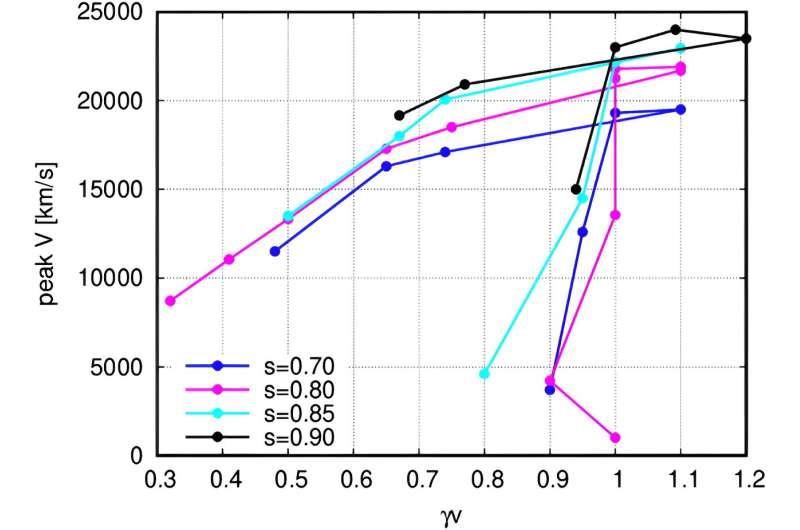August 22, 2023 report
This article has been reviewed according to Science X's editorial process and policies. Editors have highlighted the following attributes while ensuring the content's credibility:
fact-checked
peer-reviewed publication
trusted source
proofread
Simulations suggest some black holes could be moving at nearly one-tenth the speed of light

A pair of astrophysicists at the Rochester Institute of Technology has found via simulations that some black holes might be traveling through space at nearly one-tenth the speed of light. In their study, reported in Physical Review Letters, James Healy and Carlos Lousto used supercomputer simulations to determine how fast black holes might be moving after formation due to a collision between two smaller black holes.
Prior research has shown that it is possible for two black holes to smash into each other. And when they do, they tend to merge. Mergers generate gravitational waves, and an ensuing recoil can occur in the opposite direction, similar to the recoil of a gun. The energy of that recoil can send the resulting black hole hurtling through space at incredible speeds.
Prior research has suggested such black holes may reach top speeds of approximately 5,000 km/sec. In this new effort, the researchers took a closer look at black hole speeds to determine just how fast they might travel after merging.
To that end, the researchers created a mathematical simulation. One of the main data points involved the angle at which the two black holes approached one another prior to merging. Prior research has shown that for all but a direct head-on collision, there is likely to be a period of time when the two black holes circle each other before merging.
The researchers ran their simulation on a supercomputer to calculate the results of merging by black holes that approach each other from 1,300 different angles, including direct collisions and close flybys.
They found that under the best-case scenario, grazing collisions, it should be possible for a recoil to send the merged black hole zipping through space at approximately 28,500 kilometers per second—a rate that would send it the distance between the Earth and the moon in just 13 seconds.
More information: James Healy et al, Ultimate Black Hole Recoil: What is the Maximum High-Energy Collision Kick?, Physical Review Letters (2023). DOI: 10.1103/PhysRevLett.131.071401. On arXiv: DOI: 10.48550/arXiv.2301.00018
Journal information: Physical Review Letters , arXiv
© 2023 Science X Network




















